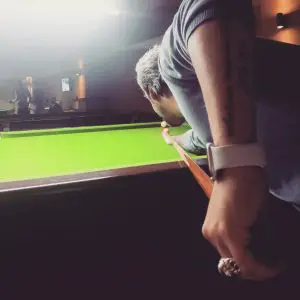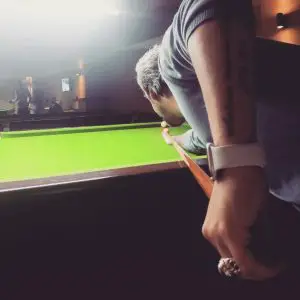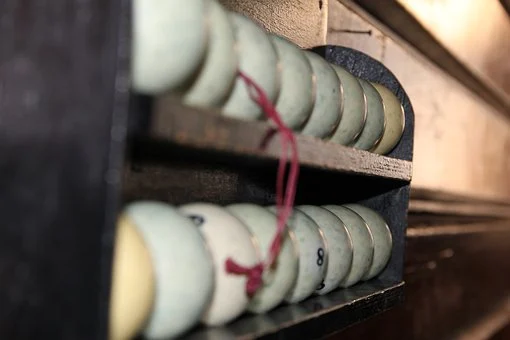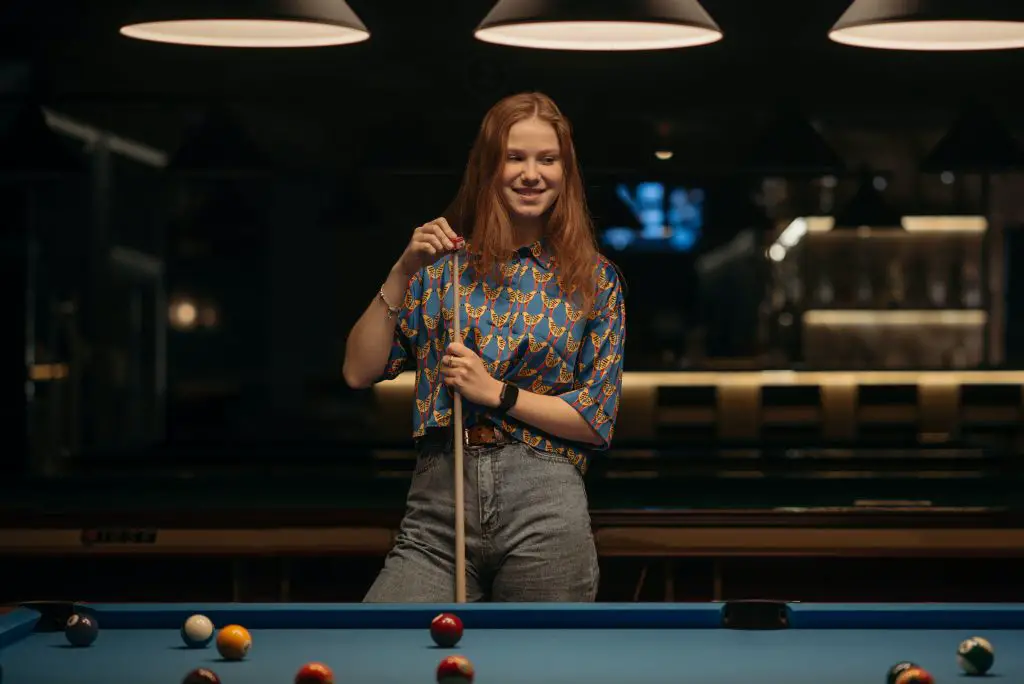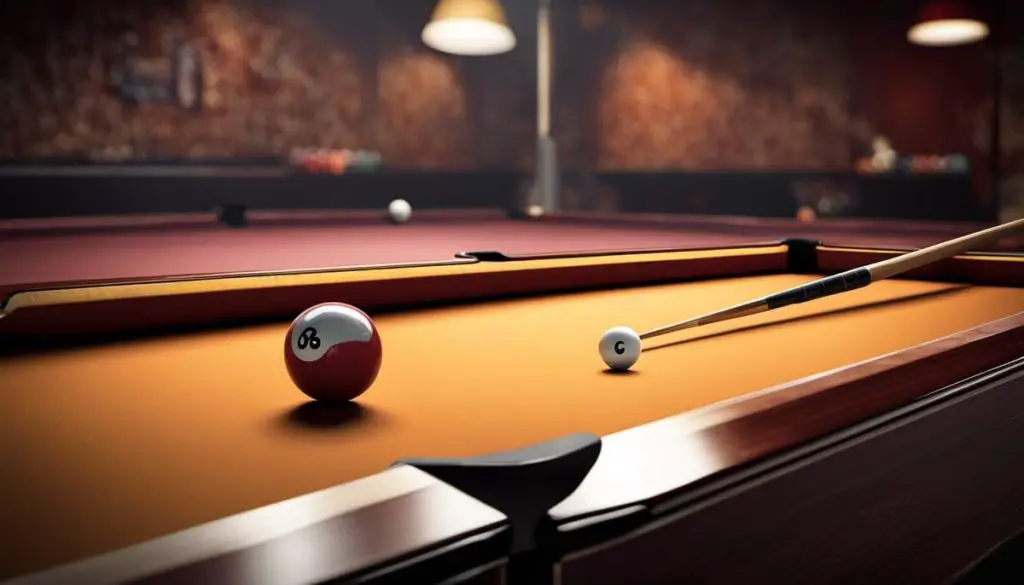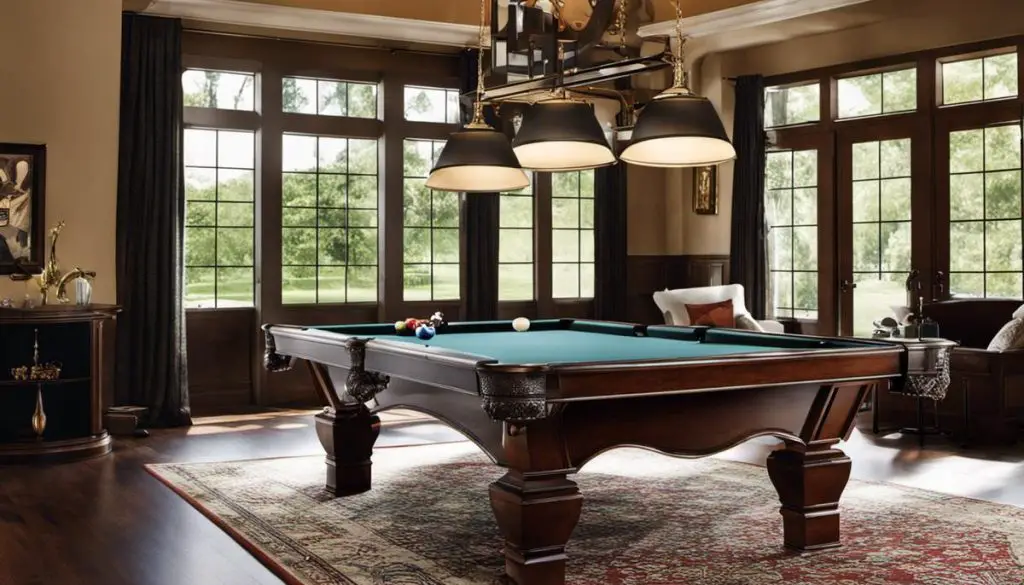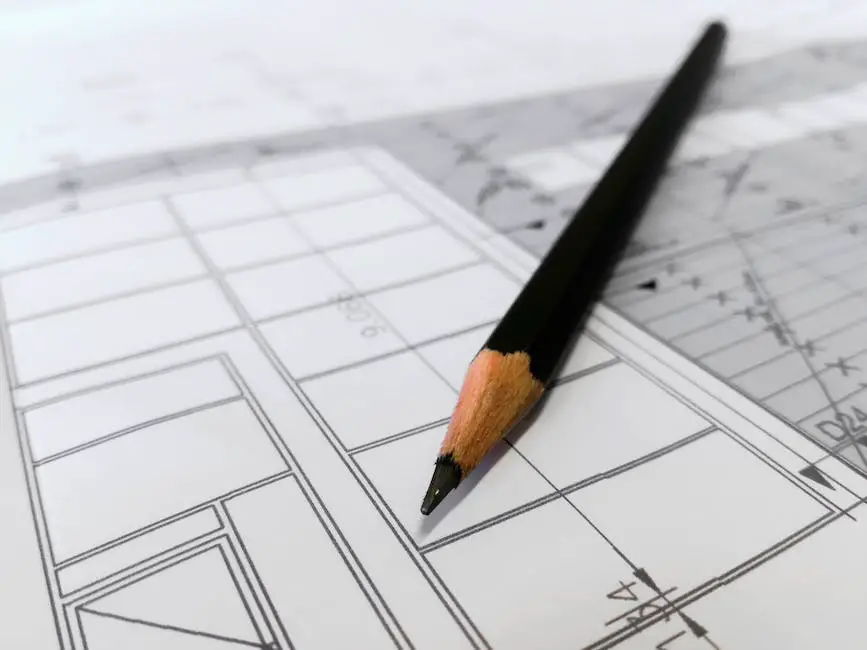What are low deflection pool cues? How do they work? There is a great amount of confusion about how low deflection (LD) shafts actually function, and what the technology really means. This article will attempt to demystify LD shafts by explaining the technology in clear terms that apply directly to playing pool. It will be helpful for many people to think of LD pool cues as just slightly different from non-LD models because that will put the technology in perspective.
What are low deflection pool cues? First, let’s define what it means for a shaft to be “low deflection.” There is no standardized test or definition for this term, but most LD shaft manufacturers use the generic term “deflection” to describe how straight a shaft plays – how much it flexes. The following is general information about different deflection levels for pool cues, and what they mean:
Non-deflection (or stiff): Shaft plays perfectly straight without any noticeable bend or flexes to it at all. Non-deflecting cues are usually more difficult to control, and have a harder “hit” or “feel.”
Low deflection: Shaft has some noticeable flex in the butt section of the shaft which results in an easier to control cue that has a softer “hit” or feel. This is the type of technology that has been around for many years and is generally accepted to be beneficial for most players.
Medium deflection: Shaft has a “deflecting” amount of flex in the butt section, which results in even more control than low-deflection cues. This type of technology is fairly new and not as common as low deflection products.
High deflection (also sometimes called “non-linear”): Shaft has a very high amount of deflection in the butt section, resulting in an even softer hitting cue than medium deflections. This type of shaft is fairly rare and isn’t generally recommended or used by most players.
What do low deflection pool cues look like? The shafts with the most deflection (also called “flex”) will bend quite a bit in the butt section and will usually be thicker, heavier, and more expensive than low-deflection models. The shafts with less deflection (or less flex) will generally appear more like traditional shafts with no noticeable change to the taper or joint specifications at all – other than the ability to have a “reverse-engineered” butt section if desired.
How do low deflection pool cues work? There are three ways in which a shaft can flex or bend while a player is shooting a ball: sideways, up and down, and twisting. A non-deflecting (stiff) shaft will not bend or flex at all in any direction, which will cause the cue to be very difficult to control. Low deflection shafts will bend sideways slightly when pressure is applied, so there is some flex or “give” to the butt section of the shaft. This allows a player to apply English without transferring too much energy into the cue ball – resulting in a good “feel” or a soft hit. Medium deflection shafts will bend some up and down as well as sideways, which allows for more English to be applied with less “cue ball hop” over the table’s surface. Low deflection pool cues do not twist or torque very much when pressure is applied by the tip during a stroke, so the hit is more consistent.
How much deflection do low deflection pool cues have? There are no “rules” about how much deflection a shaft should have, which means that there can be large variations among low-deflection products on the market. Some LD shafts will feel very stiff while others will bend considerably when pressure is applied during a stroke, but most have much more deflection than non-deflecting models.
What are low deflection pool cues used for? Low deflection shafts are generally recommended for players who need to control the cue ball better with less English. The technology has also been around long enough that many top players use LD shafts in tournaments because they are proven to help with making shots.
LD shafts are also recommended for players who need their cues to be very durable because the deflection of the butt section will reduce the amount of energy transferred into it during a shot, which results in less cue ball hop over time (although some models will still hold up better than others).
Tips for choosing a low deflection pool cue: – low-deflection shafts can be more expensive than traditional models, so keep that in mind. – Players who need more distance from their shots will probably find “low deflection” cues to be too whippy or soft for their preferences. – Players with slower shot speeds might benefit from a low-deflection shaft more than a player with a faster shot.
are low deflection pool cues worth it? That depends on how much control players need with their cue ball. The best low deflection pool cues will offer the most consistency and predictability, so there is no “risk” of having to compensate for what happens when a shaft twists or torques too much during the stroke. It should be noted that there are some other types of technology (like the “deflection reducing joint” in Predator’s Poison series ) that will allow a shaft to flex and bend more than traditional models without causing too much cue ball hop over time, but this is usually not the main selling point for anyone product.
Are snooker cue low deflection? Yes, snooker cue usually has low deflection.
What is a one-piece pool cue? The term “one-piece” means that the shaft and butt are made from one continuous piece of wood (or other material). There is no joint connecting the two pieces.
are one-piece pool cues good? One-piece cues have the advantage of not having a joint or “ferrule” that can warp or loosen with use, so they will always remain straight and true. They are also stronger than most two-piece models because there is no join to fail.
Does it less squirt? Yes, one-piece pool cues have less squirt.
What is a two-piece pool cue? – The term “two-piece” means that the butt and shaft are made from two separate parts that are joined together by a joint near the tip. The main disadvantage of this design is the potential for loosening or warping over time since each section can move independently from one another. This is not a major problem for most players, but some people prefer less twisting and turning with their pool cue so it does not affect accuracy and consistency as much.
best low deflection shaft for snooker? The low deflection shaft is not only for pool. it is also good for snooker and can reduce the effects of cue ball deflection and swerve. But some players prefer to use a high-deflection shaft because they need more spin on the ball to control cue ball position. So it’s all depends on what you need for your snooker cue.
What is the difference between a one-piece and two-piece pool cue? Two-piece cues usually have less “end weight” than one-piece models, so they might feel lighter to some players. This can be helpful for people who need to lift their shot more at the end of the stroke since there is less weight in the front of the cue. The lack of length can also make two-piece cues easier to control since there is a shorter distance between where your hand grips and where the tip sits on the cue ball. On two-piece cues, you will usually find a joint near the middle or butt end of the shaft that joins it to the butt.


